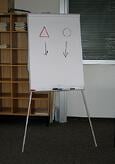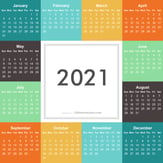Who has not experienced the dreaded "death by PowerPoint"? Slide after slide loaded with text that is being ‘read’ by the presenter. We all dread it, but then when we are asked to create a PowerPoint presentation we fall into the same trap; or we go to the other extreme and create a presentation full of images, animations, and more information that any human mind can or would want to handle. Here are three ways in which you can keep your presentations alive and avoid death by PowerPoint:
 First: Balance between presentation and interaction.
First: Balance between presentation and interaction. Reduce the number of slides and increase the number of interactions. The slides serve as the anchor, but all the details can happen outside the slides, such as on the flip chart, through your own storytelling, and interactions with the audience. If you haven’t come across “graphic recording,” check out
Visual Meetings by David Sibbet to learn about the art and science of graphic recording and how
this can create engagements in meetings and beyond.
Second: Edit each slide so it is easy on the eye and on the brain. Follow the 3x5 rule with no more than 3 to 5 key points per slide and 3 to 5 key words per point. But of course you have a lot of valuable information to present, so how can you stick

to the 3x5 rule? There are ways to do so. One viable one is to have hyperlinks supporting documents and webpages. This allows you to dive into the details when the opportunity presents itself. The details are always a click away instead of being in the way.
Third: Add charts, graphics, and animations that are relevant, and omit the gimmicky stuff. A picture is worth a thousand words they say, but what they
don’t tell you is that,

in a presentation, this is only true if the picture is
relevant and is adding amazing value to the point that you’re trying to make. Otherwise, the picture, or graph,
and especially the cute animation, can largely backfire and stand out as a big distraction and a barrier to your purpose.
What other methods have you used to avoid “death by PowerPoint"?
Additional Resources
 First: Balance between presentation and interaction. Reduce the number of slides and increase the number of interactions. The slides serve as the anchor, but all the details can happen outside the slides, such as on the flip chart, through your own storytelling, and interactions with the audience. If you haven’t come across “graphic recording,” check out Visual Meetings by David Sibbet to learn about the art and science of graphic recording and how this can create engagements in meetings and beyond.
First: Balance between presentation and interaction. Reduce the number of slides and increase the number of interactions. The slides serve as the anchor, but all the details can happen outside the slides, such as on the flip chart, through your own storytelling, and interactions with the audience. If you haven’t come across “graphic recording,” check out Visual Meetings by David Sibbet to learn about the art and science of graphic recording and how this can create engagements in meetings and beyond. to the 3x5 rule? There are ways to do so. One viable one is to have hyperlinks supporting documents and webpages. This allows you to dive into the details when the opportunity presents itself. The details are always a click away instead of being in the way.
to the 3x5 rule? There are ways to do so. One viable one is to have hyperlinks supporting documents and webpages. This allows you to dive into the details when the opportunity presents itself. The details are always a click away instead of being in the way. in a presentation, this is only true if the picture is relevant and is adding amazing value to the point that you’re trying to make. Otherwise, the picture, or graph, and especially the cute animation, can largely backfire and stand out as a big distraction and a barrier to your purpose.
in a presentation, this is only true if the picture is relevant and is adding amazing value to the point that you’re trying to make. Otherwise, the picture, or graph, and especially the cute animation, can largely backfire and stand out as a big distraction and a barrier to your purpose.







